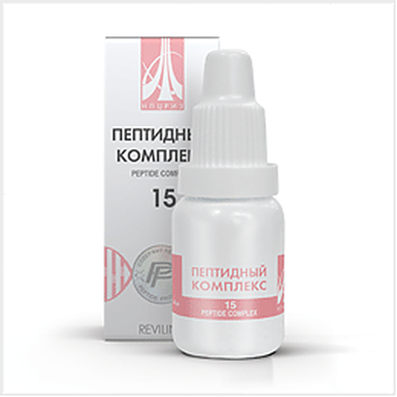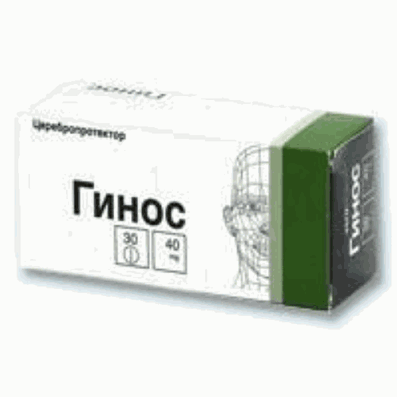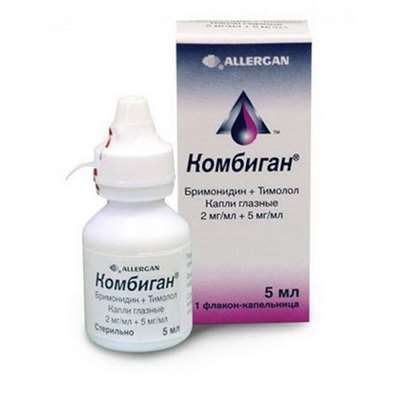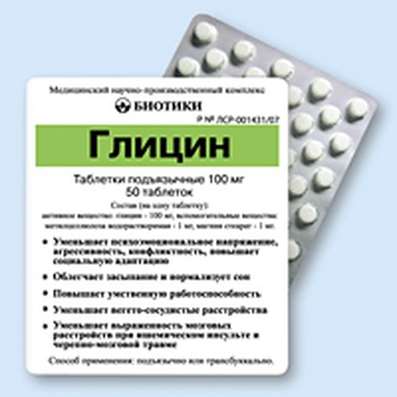Instruction for use: Pentoxifylline-Akri
I want this, give me price
Dosage form: coated tablets
Active substance: Pentoxyphyllinum
ATX
C04AD03 Pentoxifylline
Pharmacological group
Antiaggregants
Adenosinergic agents
Angioprotectors and microcirculation correctors
The nosological classification (ICD-10)
G45 Transient transient cerebral ischemic attacks [attacks] and related syndromes: Ischemic neurological disorders; Acute cerebrovascular insufficiency; Repeated transient cerebral ischemia; Transient ischemic attack; Transient ischemic condition; Transient ischemic attack; Transient ischemic attack; transient ischemia; Transient cerebral ischemic attack; Transient cerebral ischemia; Transient ischemic attacks; Chronic cerebral ischemia; Drop attacks; Transient ischemic attacks; Transient ischemic cerebrovascular accident; Ischemic brain damage; Subclavian steal syndrome
G93.4 Unspecified Encephalopathy: bilirubin encephalopathy; lacunarity status; Tremor when portal-systemic encephalopathy; The latent hepatic encephalopathy; Atherosclerotic encephalopathy; Hypertensive encephalopathy; hypoxic encephalopathy; dismetabolic encephalopathy; Encephalopathy; brain lesion; Porto-caval encephalopathy; Vascular encephalopathy; Traumatic encephalopathy; encephalopathy; encephalopathy; Encephalopathy secondary genesis; Encephalopathy discirculatory; Encephalopathy portocaval; epileptic encephalopathy; hemorrhagic shock and encephalopathy syndrome; Subacute spongiform encephalopathy
H34.1 Central retinal arterial occlusion: Central retinal artery occlusion; Spasm of the central artery of the retina; Thromboembolism of the central artery of the retina; Embolism of the central retinal artery; Acute obstruction of the central artery of the retina
H34.2 Other retinal arterial occlusions: Retinal vasospasm; Retinal artery thrombosis
H81.4 Vertigo of central origin: Vertigo labyrinthine origin; vestibular vertigo; Vertigo of vascular origin
H83 Other internal ear disorders: Disturbance of inner ear function; Violation of the inner ear function of vascular genesis; Disturbances of blood supply to the inner ear; Functional disorder of the inner ear
I63 Cerebral infarction: ischemic Stroke; Ischemic brain disease; Ischemic stroke; Ischemic stroke and its consequences; Ischemic cerebral stroke; Ischemic cerebrovascular accident; Ischemic brain damage; Ischemic brain damage; ischemic conditions; Cerebral ischemia; Acute hypoxia brain; Acute cerebral ischemia; Acute ischemic cerebrovascular accident; Acute cerebral infarction; Acute ischemic stroke; Acute period of ischemic stroke; Focal cerebral ischemia; Ischemic stroke; recurrent stroke; The syndrome of Morgagni-Adams-Stokes; Chronic cerebral ischemia; cerebrovascular stroke; embolic stroke; Ischemic brain damage
I67.2 Cerebral atherosclerosis: Atherosclerosis of the arteries of the brain; Atherosclerosis of cerebral vessels; Atherosclerotic changes in cerebral vessels; Vascular diseases of the brain; Sclerotic ischemic attacks; Sclerosis of cerebral vessels
I73.0 Raynaud's Syndrome: Raynaud's syndrome Leriche; Raynaud's disease; Raynaud's phenomenon; RaynaudLeriche syndrome; Raynaud's disease; Raynaud's syndrome with trophic disorders; Peripheral angiopathy
I74 Embolism and arterial thrombosis: Thrombosis of effort (stress); Arterial thrombosis; Arteriothrombosis; Subacute and chronic arterial thrombosis; Subacute thrombosis of peripheral arteries; Postoperative thrombosis; Vascular thrombosis; Vascular embolism; Thrombosis of aortocoronary shunt; Arterial thrombosis; Thrombosis of arteries; Coronary artery thrombosis; Coronary thrombosis; Thrombosis of blood vessels; Thrombosis with ischemic stroke; Thrombosis with general surgical operations; Thrombosis in Oncology Operations; Vascular thrombosis; Thrombus formation in the postoperative period; Thrombotic complications; Thromboembolic diseases; Thromboembolic syndrome; Thromboembolic complication in the postoperative period; Thromboembolism of arteries; Partial vascular thrombosis; Embolism; Embolism of arteries
I79.2 Peripheral angiopathy in diseases classified elsewhere: diabetic angiopathy; Angiopathy in diabetes; arteriosclerosis diabetic; Pain in lesions of peripheral nerves; Diabetic angiopathy; Diabetic microangiopathy; Diabetic vascular disease; Intermittent angioneurotic disbaziya; Macroangiopathy in diabetes; microangiopathy; Microangiopathy in diabetes mellitus; Tingling sensations in the hands and feet; Coldness in the extremities; Peripheral angiopathy; Peripheral arterial disease; Sclerosis Menkeberga; Chronic obliterating diseases of arteries
I82 Embolism and thrombosis of other veins: Recurrent venous thrombosis; Postoperative thrombosis; Venous thrombosis; Acute venous thromboembolism; Recurrent vein thrombosis; Venous thrombosis; Thrombosis of veins of internal organs; Venous thrombosis; Deep vein thrombosis; Thrombosis of blood vessels; Vascular thrombosis; Thrombosis of veins; Deep vein thrombosis; Thromboembolic diseases; Thromboembolism of veins; Severe venous thrombosis; Embolism; Embolism of veins; Thromboembolic complications
I83 Varicose veins of lower extremities: The feeling of heaviness and fatigue in the lower limbs; Varicose disseminated type; varicose veins; Varicose veins of the lower extremities; Varicose disease of lower limbs; Varicose superficial veins; Varicose veins; Varicose vein disease; varicose syndrome; varicose syndrome; Venous claudication; venous varices; venous disease; The disease of the lower extremities; Prevarikozny syndrome; Predvarikozny syndrome; Chronic varicose veins; Sclerotherapy varices
I99 Other and unspecified disorders of the circulatory system: angiopathy; Arterial angiopathy; Atherosclerotic angiopathy; Hemodynamic right heart defects; Hemodynamic defect of the right heart; coronary angiopathy; Infringement of blood circulation; Violation of circulation; Violation microcirculation in organs and tissues; Peripheral circulatory disorders; Disorders of the peripheral circulation in the extremities; circulatory failure; Hemodynamic instability occlusion of arteriovenous origin; Acute circulatory failure; Psevdostenokardicheskie state; Psevdostenokardicheskoe disorder; circulatory disorder; Cardiovascular diseases; Vascular insufficiency; Thrombosis arteriovenous shunt; Thrombosis with prosthetic heart valves; Deterioration of blood circulation in the pelvic organs; Functional failure of the cardiovascular system; Functional disorders of the cardiovascular system; Chronic arterial insufficiency; Chronic heart failure; Age-related vascular disease; The risk of thrombosis
Z100 * CLASS XXII Surgical practice: Abdominal surgery; adenomectomy; Amputation; Coronary angioplasty; Angioplasty of the carotid arteries; Antiseptic skin treatment for wounds; Antiseptic Hand; Appendectomy; atherectomy; Balloon coronary angioplasty; Vaginal hysterectomy; The coronary bypass; Interventions in the vagina and cervix; Interventions on the bladder; Intervention in the mouth; Restoration and reconstructive surgery; Hand hygiene of medical personnel; Gynecologic surgery; Gynecological intervention; Gynecological surgery; Hypovolemic shock during operations; Disinfection of purulent wounds; Disinfection of wounds edges; Diagnostic intervention; Diagnostic procedures; Cervical Diathermocoagulation; Long-surgery; Replacing the fistula catheters; Infection in orthopedic surgery; Artificial heart valve; cystectomy; Short-term outpatient surgery; Short-term operation; Short surgical procedures; Krikotireotomiya; Blood loss during surgery; Bleeding during surgery and in the postoperative period; Kuldotsentez; laser photocoagulation; laser coagulation; retinal laser coagulation; Laparoscopy; Laparoscopy in Gynecology; CSF fistula; Small gynecological operations; Small surgical procedures; Mastectomy and subsequent plastic; mediastinotomy; Microsurgical operations on the ear; Mukogingivalnye operation; suturing; Minor surgery; neurosurgical operation; Immobilization of the eyeball in ophthalmic surgery; testectomy; pancreatectomy; Perikardektomiya; The period of rehabilitation after surgery; The period of convalescence after surgery; Percutaneous transluminal coronary angioplasty; Pleural thoracentesis; Pneumonia postoperative and posttraumatic; Preparation for surgical procedures; Preparation for surgery; Preparation of the surgeon's hands before surgery; Preparation of the colon for surgical procedures; Postoperative aspiration pneumonia in neurosurgical and thoracic surgery; Postoperative nausea; Postoperative bleeding; postoperative granuloma; postoperative shock; The early postoperative period; myocardial revascularization; Radiectomy; gastric Resection; bowel resection; uterine Resection; liver Resection; enterectomy; Resection of part of the stomach; Reocclusion of the operated vessel; Bonding tissues during surgical procedures; Removal of sutures; Condition after eye surgery; Condition after surgery; Condition after surgery in the nasal cavity; Condition after gastrectomy; Status after resection of the small intestine; Condition after tonsillectomy; Condition after removal of the duodenum; Condition after phlebectomy; Vascular surgery; Splenectomy; Sterilization of surgical instruments; Sterilization of surgical instruments; sternotomy; Dental surgery; Dental intervention in periodontal tissues; strumectomy; Tonsillectomy; Thoracic surgery; Thoracic surgery; total gastrectomy; Transdermal intravascular coronary angioplasty; Transurethral resection; Turbinektomiya; Removal of a tooth; cataract surgery; Removal of cysts; tonsillectomy; Removal of fibroids; Removing the mobile primary teeth; Removing polyps; Removing broken tooth; Removal of the uterus body; Removal of sutures; Fistula likvoroprovodyaschih ways; Frontoetmoidogaymorotomiya; Surgical infection; Surgical treatment of chronic limb ulcers; Surgery; The surgery in the anal area; The surgery on the colon; Surgical practice; The surgical procedure; Surgical interventions; Surgery on the gastrointestinal tract; Surgical procedures on the urinary tract; Surgical procedures on the urinary system; Surgical intervention of the genitourinary system; Surgical procedures on the heart; Surgical manipulation; surgery; Surgery on the veins; Surgical intervention; Vascular surgery; Surgical treatment of thrombosis; Surgery; cholecystectomy; Partial gastric resection; hysterectomy; Percutaneous transluminal coronary angioplasty; Percutaneous transluminal angioplasty; Coronary artery bypass; tooth Extirpation; Extirpation of milk teeth; pulpectomy; pulsative cardiopulmonary bypass; tooth Extraction; teeth Extraction; cataract extraction; Electrocoagulation; endourological intervention; episiotomy; Etmoidotomiya; Complications after tooth extraction
Composition and release form
Pentoxifylline 0.1 g
In a planar cell pack of 10; In a pack of cardboard 6 packages.
Pharmacology
Mode of action - Antiaggregational.
Oppresses phosphodiesterase and stabilizes cAMP in organs and tissues (smooth muscle cells of blood vessels, uniform elements of blood, etc.). It inhibits the aggregation of platelets and erythrocytes, increases their elasticity, increases fibrinolysis.
Pharmacodynamics
Reduces the viscosity of blood, improves its rheological properties. Has a weak vasodilator effect, somewhat reduces OPSS, has a positive inotropic effect.
Pharmacokinetics
Quickly and completely absorbed from the digestive tract. Cmax is noted 1 h after administration. After 8 hours the concentration is significantly reduced (up to 10% of the initial). It is excreted in the urine in the form of inactive metabolites.
Indications of Pentoxifylline-Akri
Violation of the peripheral blood circulation and blood supply to the brain due to atherosclerosis, ischemic cerebral stroke, dyscirculatory encephalopathy, trophic tissue and organ disorders (arterial or vein thrombosis, varicose veins, frostbite), diabetic angiopathy, paresthesia, Raynaud's disease, acute obstruction of the central artery of the retina, Inner ear of vascular genesis; It is also used in patients with an artificial heart valve and after operations of arterial shunting.
Contraindications
Hypersensitivity, acute myocardial infarction, massive bleeding, hemorrhages in the retina of the eye, simple diabetic and proliferating diabetic retinopathy, pronounced atherosclerotic lesions of the vessels of the brain and heart, severe disturbances of the heart rhythm.
Pregnancy and breast-feeding
Contraindicated.
Side effects
Nausea, vomiting, dizziness, headache, nervousness, drowsiness / insomnia, dyspeptic phenomena, tachycardia, weight change, swelling, bleeding, skin flushing, increased brittle nails, skin allergic reactions.
Interaction
Strengthens the effects of antihypertensive drugs, insulin, oral antidiabetic drugs.
Dosage and Administration
Inside, after eating, not chewing, drinking water.The initial dose is 0.2 g 3 times a day. As the condition improves, the daily dose can be reduced to 0.1 g in 3 divided doses. The course of treatment is 2-4 weeks. With lighter forms of the disease - 0.2 g / day. Patients with Cl creatinine less than 10 ml / min are prescribed 50-70% of the recommended dose.
Precautionary measures
During the treatment period, BP should be measured regularly. When combined with anticoagulants, it is necessary to monitor the parameters of the blood coagulation system.
Storage conditions of Pentoxifylline-Akri
In a dry, the dark place at a temperature below 25 ° C.
Keep out of the reach of children.
Shelf life
2 years
Do not use beyond the expiration date printed on the package.

 Cart
Cart





